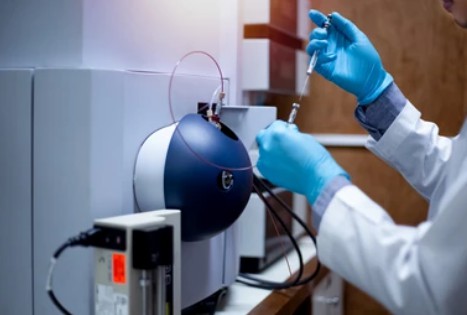Impurities and Residual Solvent Analysis
InquiryTesting and analysis strategies for drug impurities and residual solvents are key to optimizing the purity, safety, and quality control of active pharmaceutical ingredients (APIs) and finished products. CD Formulation is committed to providing customers around the world with a wide range of impurity and residual solvent analysis services to ensure product safety and quality and accelerate time to market.
Why is Pharmaceutical Impurity and Residual Solvent Analysis Necessary?
Pharmaceutical impurity and residual solvent analysis are essential for ensuring the safety, efficacy, and quality of pharmaceutical products, as well as for maintaining regulatory compliance. Impurities in pharmaceuticals come from many sources, including:
- Reaction intermediates and catalysts remain during chemical synthesis.
- Possible impurities and harmful substances in raw materials and excipients.
- Impurities and additives are produced by incomplete reactions.
- Cross-contamination and residual solvents during processing.
These impurities can be organic or inorganic, and are present at very low or trace levels, often negatively affecting product quality and performance. Therefore, strict quality control and analysis of raw materials and intermediate products as well as finished products are required during the production process to ensure that the products are not affected by these impurities and comply with regulatory requirements.

Explore Our Impurities and Residual Solvent Analysis Services
As experts in the development of innovative drug delivery systems and a global leader in CMC analysis, CD Formulation provides unparalleled impurity and residual solvent analysis services to our global clients in drug development, ensuring their drugs meet all quality standards before approval by stringent regulatory agencies.
We have the most advanced equipment and technology to accurately and quickly analyze any impurities or residual solvents that may be present in drugs to ensure the safety, purity, and effectiveness of the drugs.
Impurity Analysis Services
Our impurity analysis expert team provides standard elemental impurity analysis testing based on the methods described in the European Pharmacopoeia (EP) and the United States Pharmacopoeia (USP) general chapters and can conduct 24 potential elementals analysis that is included in the ICH Q3D guidelines for APIs, excipients, and formulations.
In addition, our team of impurity analysis experts provides nitrosamine impurity analysis services based on the testing methods for N-nitrosodimethylamine (NDMA) impurities in some drugs issued by the FDA, and conducts analysis and testing for 7 kinds of nitrosamine impurities that may exist in raw materials and drugs:
Available impurity analysis projects:
| projects |
Source of impurities |
Available analytical methods |
Available analysis projects |
| Elemental impurity |
- Intrinsic sources: Mainly due to the impurity of pharmaceutical raw materials and incomplete purification during the preparation process. For example, the raw materials contain residues of other elements, reaction products or by-products, etc.
- External sources: Mainly due to adverse factors introduced during drug preparation, packaging, storage, and transportation. Such as environmental pollution, artificial adulteration, and unclean raw material.
|
- Inductively coupled plasma-mass spectrometry (ICP-MS)
- Inductively coupled plasma-optical emission spectroscopy (ICP-OES)
- Ion chromatography (IC)
- Flame atomic absorption (FLAA) spectroscopy
- X-ray fluorescence (XRF)
- Atomic absorption spectroscopy (AAS)
- Atomic emission spectroscopy (AES)
|
- Class 1:Cd, Pb, As, Hg
- Class 2:Co, V, Ni
- Class 3:Tl, Au, Pd, Ir, Os, Rh, Ru, Se, Ag, Pt
- Class 4:Li, Sb, Ba, Mo, Cu, Sn, Cr
- Others:Al, B, Ca, Fe, K, Mg, Mn, Na, W, Zn…
|
| Nitrosamine impurity analysis |
- Use sodium nitrite (NaNO2) or other nitrating agents.
- Use contaminated solvents or catalysts.
- Use raw materials and intermediates contaminated with nitrosamines.
- Degradation processes of starting materials, intermediates, and drugs.
- Cross-contamination occurs in the production process.
|
- GC-MS
- GC-MS/MS
- LC-MS/MS
- LC-HRMS
|
- N-nitrosodimethylamine (NDMA)
- N-nitrosodiethylamine (NDEA)
- N-Nitrosoethylisopropylamine (NIEPA)
- N-nitrosodiisopropylamine (NDIPA)
- N-nitrosodibutylamine (NDBA)
- N-Nitrosoethylisopropylamine (NEIPA)
- N-Nitrosomethyl-4-aminobutyric acid (NMBA)
|
Residual Solvent Analysis Service
Residual solvents in pharmaceuticals refer to volatile organic solvents used in the manufacturing process of raw materials or pharmaceuticals. Our team of pharmaceutical impurity analysis experts provides unparalleled residual solvent measurement and identification services, helping customers around the world ensure that residual solvents in drug products, drug substances, and excipients have been reduced to acceptable levels.
Our expert team of drug impurity analysis performs standard residual solvent analysis tests according to the methods described in the USP<467> and the EP to ensure that residual solvents in all excipients and drug substances as well as finished products are controlled.
Available analysis methods:
- Headspace GC-MS
- GC (FID, ECD, PID, TCD)
- GC/MS
- LC
- LC/MS
- Analysis method development for residual solvent.
In addition to the above impurity analysis and residual solvent analysis services, for biological products, CD Formulation also supports process-related impurities, genotoxic impurities, and other testing services. Please contact our scientists to learn more about impurity analysis services for biological products and other related testing services.
Why Choose CD Formulation for Impurities and Residual Solvent Analysis?
- Comprehensive quality assurance expertise in pharmaceutical impurity analysis to address complex analytical challenges, helping you meet and exceed quality, safety, and regulatory standards.
- Flexible, tailor-made solutions that comply with impurity analysis testing guidelines and international standards.
- Comprehensively understand the pharmacodynamic properties of raw materials, finished products, and preparations to ensure that they meet specified standards and requirements.
- Reveal potential chemical constituents in drug substances and excipients to generate accurate and reliable data to aid in the appropriate risk-based assessment of finished products.
- A variety of analytical techniques and equipment are used to identify and quantify pharmaceutical impurities in a variety of sample matrices.
- Support process-related impurity analysis in biopharmaceuticals.
CD Formulation has extensive experience and expertise in performing impurities and residual solvent analysis services. Our team of experienced scientists will work with you to develop a customized testing plan that meets your specific needs. Please contact us to learn more about how we can help you conduct impurities and residual solvent testing and verify the safety of your products to regulatory requirements.
Reference
- Pilaniya K, Chandrawanshi HK, Pilaniya U, et al. Recent trends in the impurity profile of pharmaceuticals. J Adv Pharm Technol Res. 2010, 1(3):302-10.
Please note: Our products and services are not intended to be used directly in diagnostic or therapeutic procedures.
Related Services



